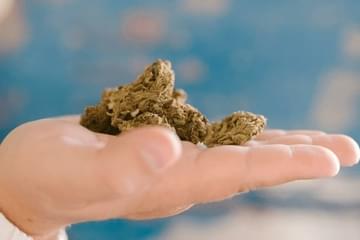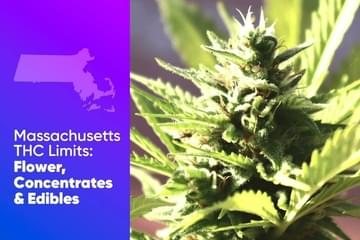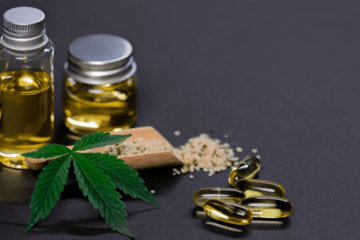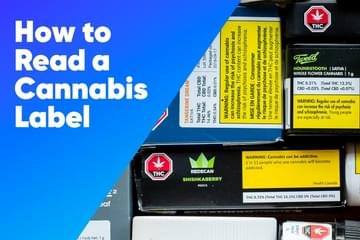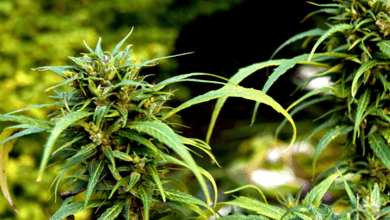
Where is Cannabis Growing the Most Environmentally Friendly?
Published on 12/19/21
Environmental responsibility is important, and while the impact of cannabis cultivation isn't nearly as detrimental to the world as other industries, there's still a lot that needs to improve around cannabis farming. The environmental downside of marijuana has been known for a while, but new studies are helping us better understand the national landscape of harmful emissions related to cultivating marijuana. Because of new studies, we can even pinpoint which states (and which regions within specific states) produce the highest amount of environmental harm.
How We Got Here
 Unsplash
UnsplashCannabis has a noticeable impact on the environment, which underlines that, while it's still federally illegal, there is a lot of demand and a lot of people growing marijuana plants all across the United States. This wasn't the case 20 years ago. For the last 50 years, America has been plagued by the War on Drugs, wherein cannabis has been systematically targeted by the government as a notably harmful substance. Weed has always maintained underground use, but the public's opinion largely forced cannabis into the margins of society.
This began to change when California legalized medical cannabis in 1996, and there has been a rapid widespread wave of legalization in the last 10 years since Washington and Colorado became the first states in 2012 to legalize recreational weed. As of October 2021, there are 36 states that have legalized medical marijuana and 18 that have legalized recreational marijuana. Public opinion is at an all-time high, with over 90% of adult citizens in support of cannabis being at least medically legalized (60% believe it should be fully legal on a federal level). This new wave of legalization is a breakthrough, and it is helping deconstruct the systematic prejudices, such as racism, that used marijuana to suppress minorities and push political agendas. However, it's also the reason why we need to discuss, now more than ever, marijuana and the environment.
How Is Marijuana Harmful for the Environment
When we ask, "how can marijuana cause environmental problems," we need to look at the various aspects of its cultivation. While outdoor cannabis farming can have a negative environmental impact due to cannabis water use and certain ozone interferences that may be because of a marijuana plant's terpenes, our current understandings suggest that indoor cannabis growth is far more environmentally detrimental. In fact, this is exactly what a new study published in Nature found. A large portion of commercial cannabis is conducted indoors for quality control and security growing (41% of producers solely grow indoors), however, it puts a high strain on the environment by producing considerable amounts of greenhouse gas (GHG). Indoor growing requires artificial lighting (the more light marijuana plants have, the more they produce) since there isn't immediate access to natural daylight, constant air filtration with high-end HVAC units that also help regulate temperature and moisture levels. These two aspects of cultivation account for well over 50% of a product's final GHG emissions. Transportation, waste and growth CO2 amounts account for the rest.
Where Indoor Cultivation is Most Environmentally Friendly
 Unsplash
UnsplashThe highest levels of GHG are noted in regions that require much higher artificial control and more difficult transportation after production. To properly flower, cannabis needs to be kept in a constant temperature range of 65 to 85 degrees Fahrenheit. Humidity levels need to be kept between 40% and 70%, depending on the growth stage. Constant light is required and the higher the intensity, the more a plant can yield. So, in Colorado, for example, GHG emissions are 19% less in Pueblo than in Leadville because of geographic location. Temperatures and humidity are more stable and closer to the ideal ranges; plus, transportation out of the mountains in Leadville requires a lot more resources than transporting out of the Pueblo high desert. A visual representation of this disparity between certain geographic locations and their GHG emissions can be seen in this comprehensive online map of greenhouse gas emissions of indoor cannabis production in the US. More consistently cold environments have a massive spike of GHG emissions, including Alaska, Colorado and the entire north and Midwest. States that see more consistent temperatures (and states that are likely to have more outdoor cannabis operations) show far less GHG emissions, such as California, Washington, Nevada and the east coast. However, indoor growing, no matter where, takes up large amounts of energy, including electricity, and produces concerning levels of GHG. Needless to say, all of this points to one conclusion: the current marijuana environmental impact isn't something we can ignore.
Tips for Growing Cannabis More Sustainably
Grow Your Cannabis Outdoors
Growing outdoors still requires a lot of water, and the cultivation process still gives off GHG, but not needing artificial lighting or HVAC systems cuts back on the environmental impact substantially.
Grow Using Renewable Resources
Stay away from plastics. From the tools you use, the pots and gardens you plant in, and the packaging used at the very end of the process. The more you can cut back on using plastics, the smaller your environmental footprint.
Use Energy-Efficient HVAC Systems & Lights
If growing outdoors isn't an option use a combination of natural and artificial light, and install low-impact bulbs that give off less heat. The same goes for your HVAC system. Automated systems that monitor and adjust to the needs of a room will save energy compared to non-automated systems that run 24/7.
These tips won't completely negate the environmental impact of growing cannabis, but they help a little bit, and every little change we can make for the better is worth our while.
Do you cultivate cannabis? Let us know your thoughts on the environmental impact of cannabis and what you do to curb the harm of your operations. Comment below!











